The best things to eat in Penang, Malaysia’s food paradise – Hokkien mee, char kway teow, Nyonya kuih and more
Friends, friends’ relatives and a tour guide take Susan Jung on a journey to find the most delicious street and restaurant food in Penang. In the first of two reports, she heads to the historic state capital of George Town

The scene that took place as I was eating with a tour guide and a friend on the streets of George Town in Penang seemed so contrived I wondered if we were being covertly filmed by a Malaysian tourism group.
All of the local Penangites I had asked about where and what to eat insisted that the Malaysian state has the best food in the country. They said that people from other parts of Malaysia travel there on the weekends, and even Singaporeans make the long trip up just to eat there.
They advised me that it was best to visit on weekdays, rather than the weekend, when the state, especially the capital city of George Town – the historical core of which is a Unesco World Heritage Site – gets even more crowded with hungry visitors.
As if to prove their point, a group passing by our table spotted the apoms – small folded pancakes made from fermented rice flour batter – we were eating. “Where did you get those? We’ve been looking all over for them!” they said excitedly.
We gave directions to the vendor across the street, and the ladies told the men to go and buy some. “Get 20,” they ordered. Then they second guessed themselves. “Is 20 enough? Maybe we should get more...” We asked where they were from. Singapore, they said, adding: “We come to Penang for the food.”
The eating began as soon as I stepped off the plane. My friend’s mother sent her driver, Ah Soon, to pick me up (I had been warned to avoid Penang taxis). From our conversation, Ah Soon sounded as if he was a real foodie, although he became a vegetarian five years ago (he admits that Penang is not great for food if you’re a vegetarian).
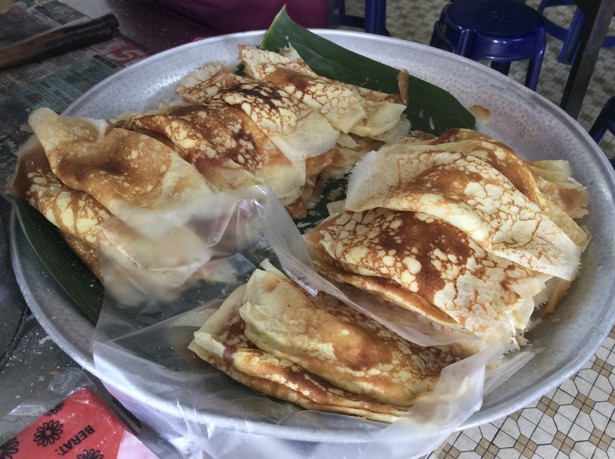

Supper number one – portions in Malaysia tend to be small – was at Eight Eight Eight Hokkien Mee. I asked for a small bowl of Hokkien mee – mee is Malaysian for noodles – for five Malaysian ringgit (US$1.20) with the addition of chitterlings (one ringgit) and fish balls (1.5 ringgit). It was entirely different from the Hokkien mee I’ve eaten in Kuala Lumpur, which consists of noodles covered in a thick brown sauce and sprinkled with fried lard; this was a soup version, also known as prawn mee.
Within minutes, I was spooning up a light but intense broth, while slurping up yellow noodles, rice vermicelli and bean sprouts.
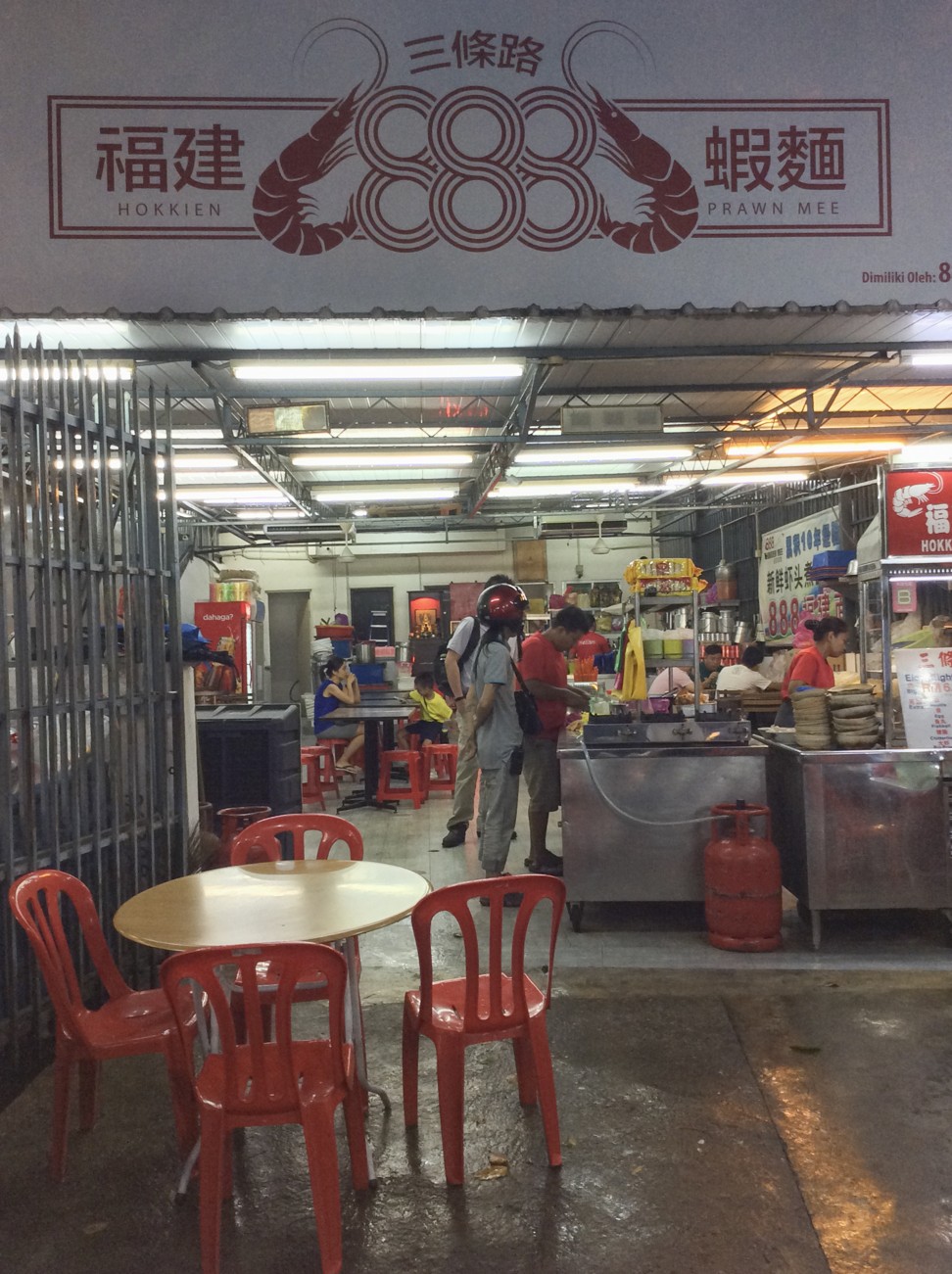
We got back in the car for a short drive to the next snack: probably Malaysia’s best known dish, char koay teow (often spelt char kway teow). Only a few vendors were open at the Song River Cafe hawker centre, but the young char koay teow cook was hard at work making each order one by one in a small wok over a high fire.
The ingredients occasionally flared up in the wok as he stir-fried rice noodles, bean sprouts, prawns and Chinese sausage with dark soy sauce and added a duck egg (7 ringgit; with chicken egg it is 6 ringgit) before serving it steaming hot.
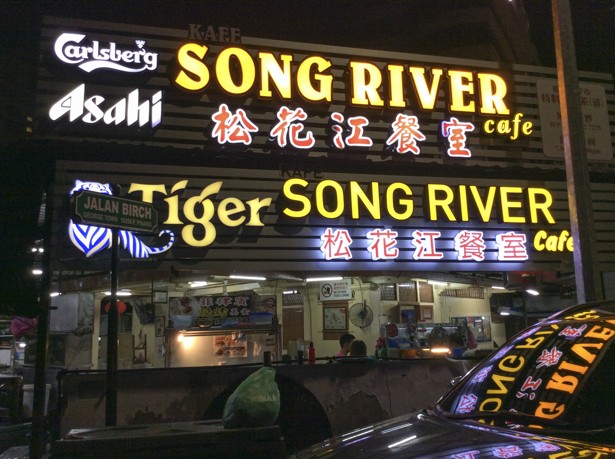
I had only two-and-a-half days in which to eat and was reluctant to trouble my Penang friends too much, so for my first full day I booked a tour on Delish Asia (delishasia.com). The guide, Joy Cheong, is originally from Singapore, but having married a Penangite, she and her husband decided that it was a better place to raise their children.
She said that while Singapore has better fine dining, Penang has better street food. We were joined by my friend Peter Yeoh, who was born in Penang but lived in other countries, including Singapore and Australia, before moving back last year. He contributes food reviews to the Hungry Onion website.

We headed to 77 Food Yard, which has several hawkers under one roof.

The vendor selling white curry mee (5 ringgit) dished up a bowl of yellow noodles and rice vermicelli and poured over a ladle of coconut-milk-based broth before adding a too-small dollop of sambal (thick chilli sauce). It wasn’t the best white curry mee – the broth was thin and a bit insipid – but I loved the other ingredients in the bowl: cockles, pig’s blood, dried cuttlefish and fried bean curd.
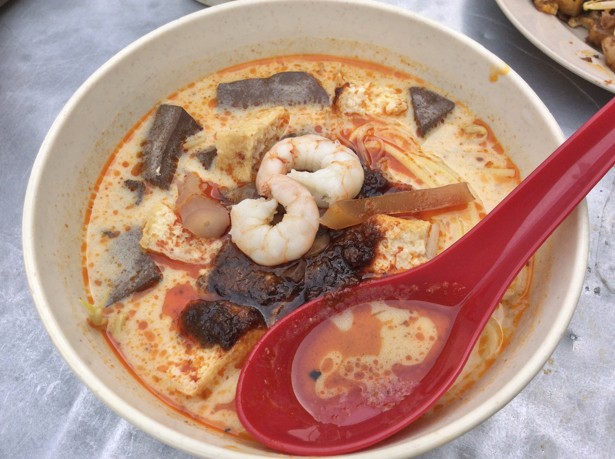
What I liked better was char koay kak being cooked up by a street vendor on Solok Moulmein, the road in front of 77 Food Yard. The man cooked a large batch of rice flour cubes along with bean sprouts, Chinese sausage and preserved turnip in a huge wok, then, as each customer placed an order, he would personalise an individual portion (starting at 3 ringgit) with chicken egg, duck egg or seafood.
And those apoms that the Singaporeans were so excited about? The Indian vendor, whose stall is across the street from 77 Food Yard and faces the main Jalan Burma road, represented Penang in a cooking competition in Singapore run by the Makansutra food guide organisation. He was meticulous as he cooked the spongy cakes over charcoal, ladling the fermented rice batter into a clay pot, covering it with another clay pot to concentrate the heat, and continuously turning and moving the pots to different burners so they would cook evenly.
The apoms (1 ringgit each) looked dull, but they were light and airy, tasting deliciously of coconut milk. I could have eaten several more.

We walked down Solok Moulmein to the corner of the Jalan Pasar road and found a street vendor cooking ban chien kueh over charcoal.
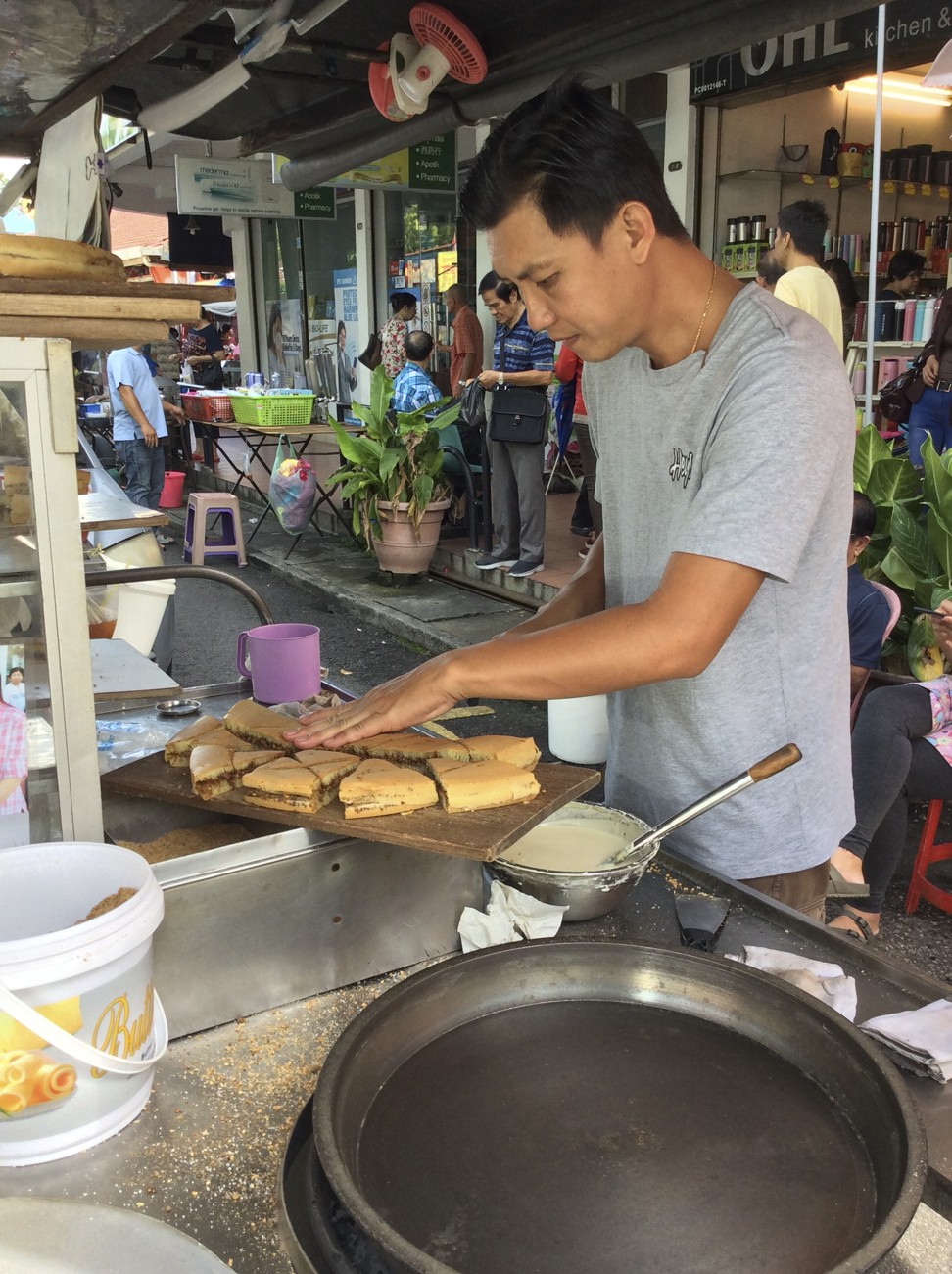
He ladled in the batter and let it “bake” in a wide pan before topping it with white and brown sugar, which melted and bubbled in the heat. He sprinkled on a layer of ground peanuts, lifted the thin cake from the pan, cut it in half and folded it before cutting it up into wedges which he sold for 1.20 ringgit a piece.
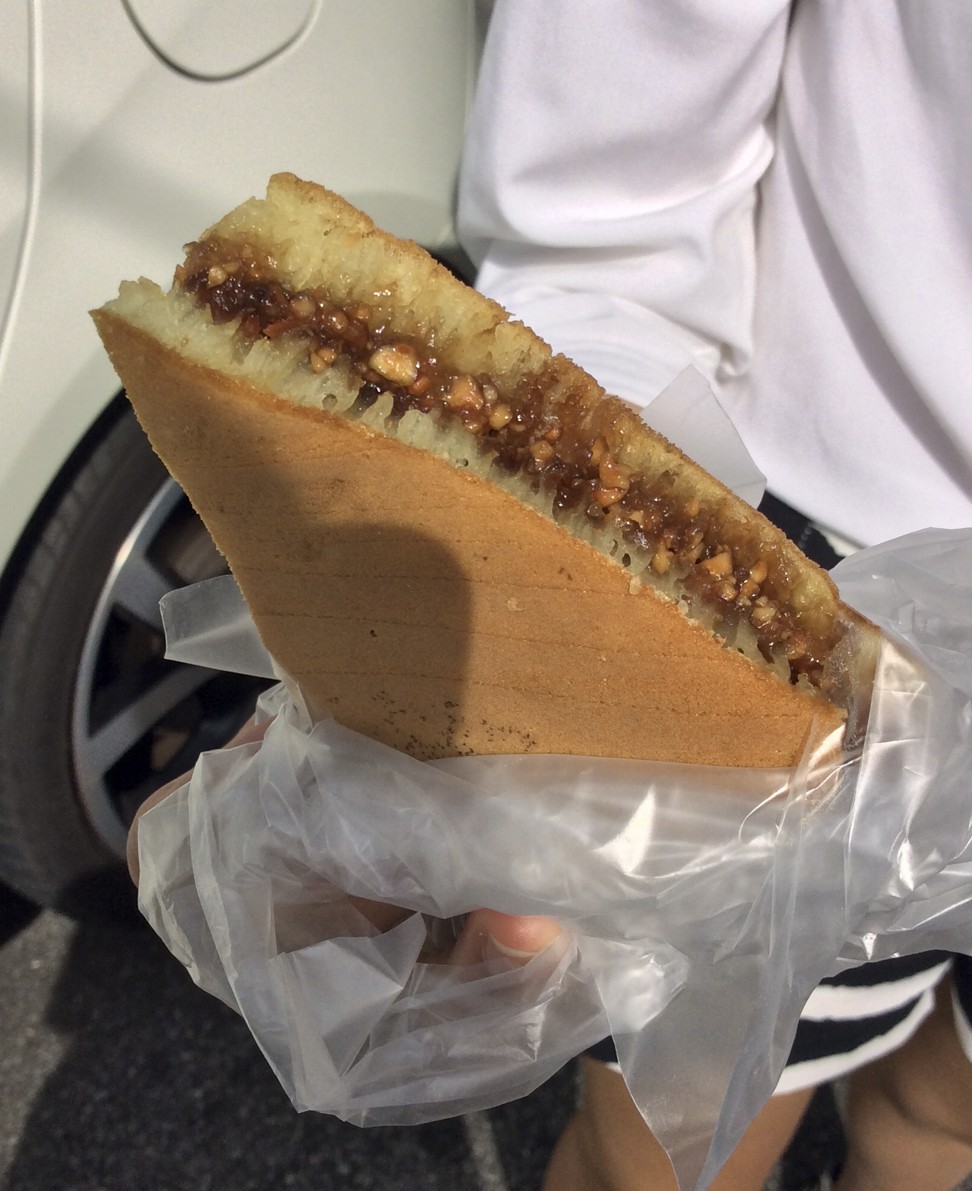
We ate more sweet treats at Li Er Cafe. Although the shop sells savoury dishes, it’s best known for Nyonya kuih – small rice-based cakes.

These were the best I’ve ever tasted. They were made with rice flour, rather than glutinous rice flour, and were therefore lighter and less sticky. All of the kuih are made in the back of the shop and there was a selection of at least a dozen, all beautifully presented. We tried four (2.20 ringgit each): cassava-based kuih bingka ubi kayu; pandan- and coconut-flavoured kuih talam; pink-striped kuih lapis; and pulut tai tai, which is tinted blue from butterfly pea flower and topped with kaya (pandan and coconut jam).
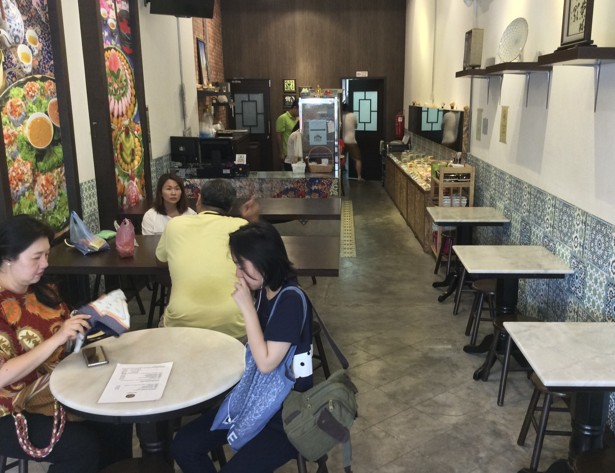
At around 11.30am we headed to another part of George Town to visit Siam Road Char Koay Teow. The vendor, in his late seventies, used to have a street cart, but now shares a shopfront with Happy Laksa.
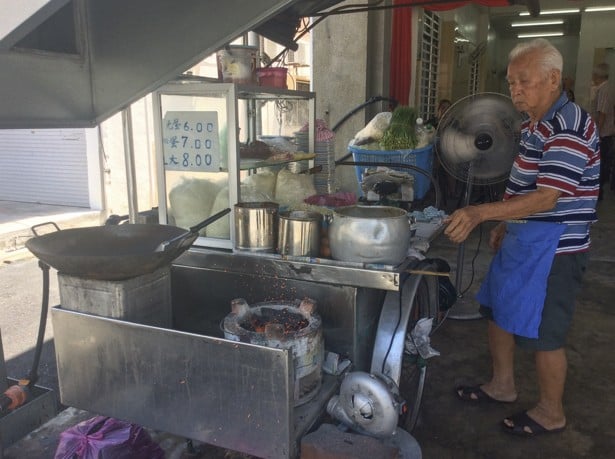
We arrived early because we wanted to snag a table, so while we were waiting for the vendor and his son (who is in his fifties), we had bowls of Siam laksa (5 ringgit), which is similar to asam laksa but with the addition of coconut milk – making the deliciously tart, slightly spicy broth a little creamier.
The char koay teow vendor, Tan Chooi Hong, and his son finally arrived just before noon and started to set up their station, which included lighting a charcoal fire. A line quickly formed, and even though we’d arrived early, there were other customers in front of us.

Tan prepared batches large enough for four portions, and personalised them to order. The wide rice noodles were cooked with lard, bean sprouts, chives and dark soy sauce, with additions of cockles, shrimp and Chinese sausage (prices range from six to eight ringgit). We received our plates at around 1pm and, while the servings wouldn’t win any points for presentation, they tasted fantastic – moist but not gloopy, with a complex, smoky flavour, tender noodles and still-crunchy bean sprouts.

We had a nap, then went for a short walk (and more snacks) before heading to a 6pm dinner at Tek Sen Restaurant.
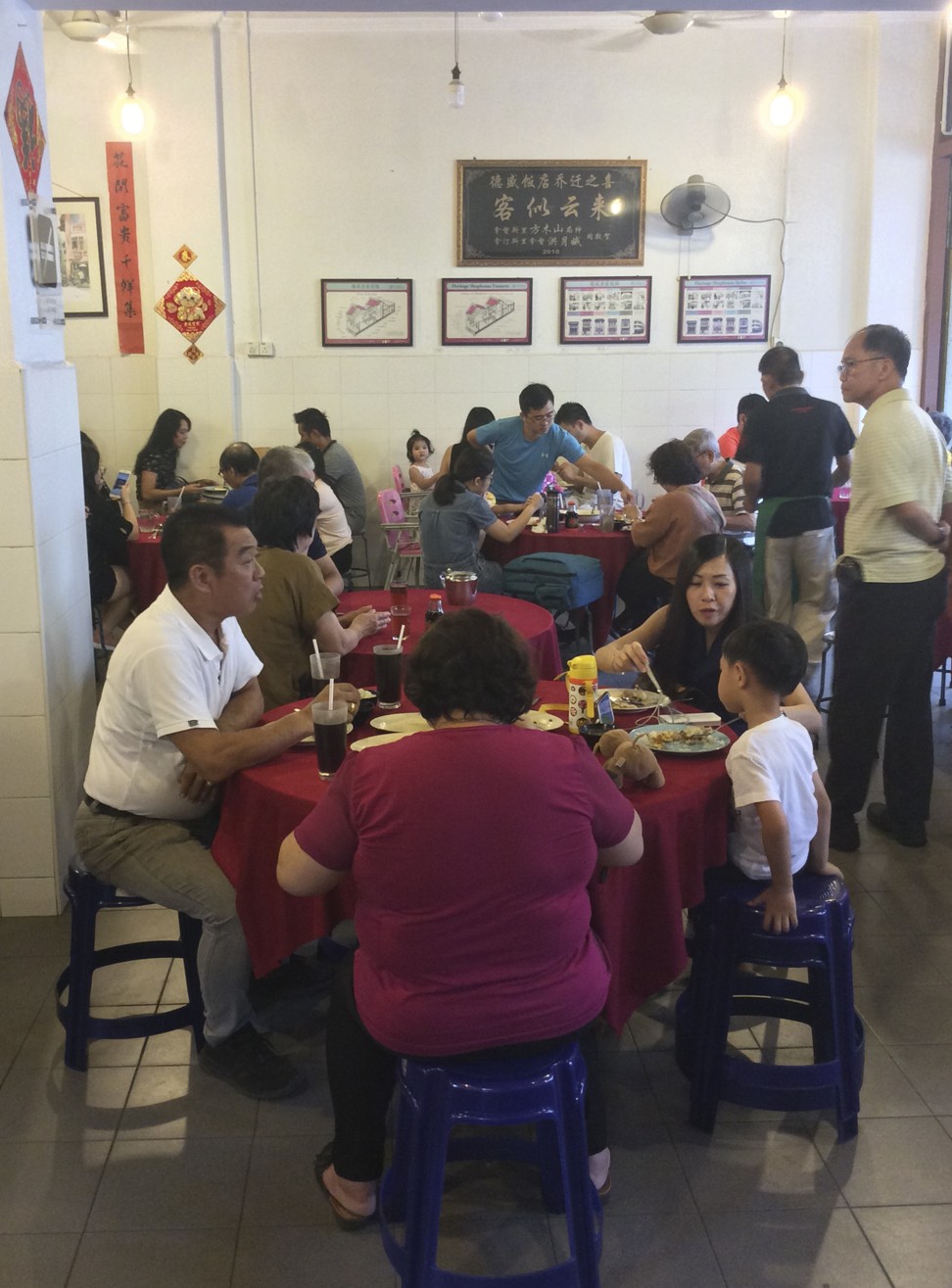
The deep-fried home-made tofu with prawns, dried scallop and egg white topping (12 ringgit) wasn’t that exciting. But I loved the sticky, chewy double-roasted pork with bird’s eye chilli (16 ringgit), tender pieces of stingray in a tart gravy with tamarind, okra, tomatoes and onion (45 ringgit), and a daily special of lala clams with fermented yellow beans (market price).
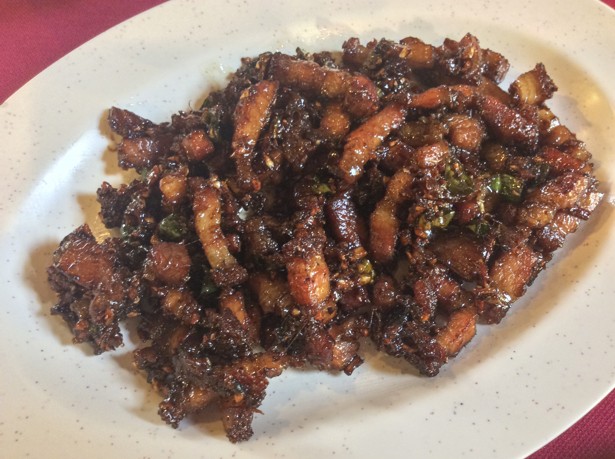
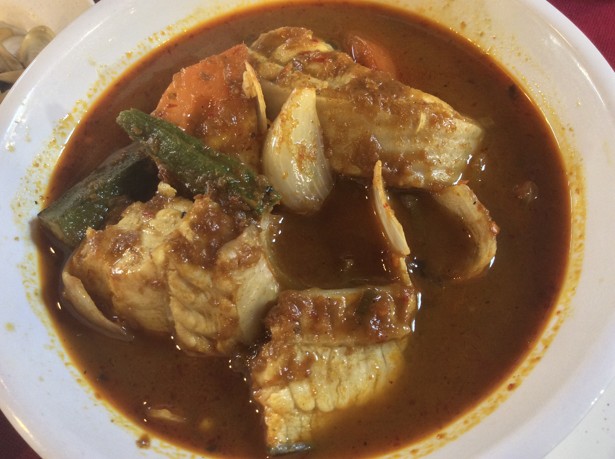
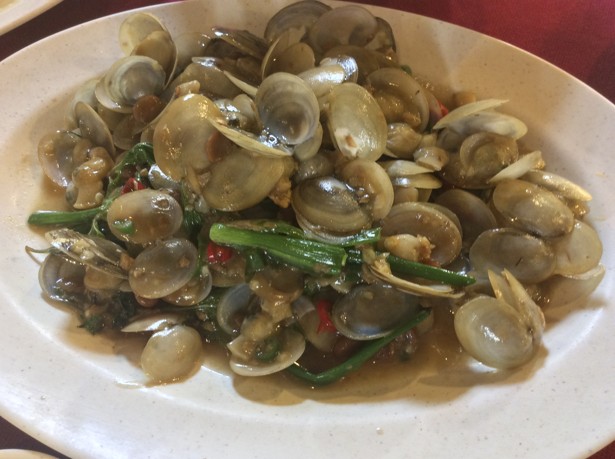
We took a long stroll after dinner. What’s great about Penang – and not just George Town – is that they really preserve the history and culture. In addition to keeping old shopfront facades – even if the business has changed – you can also find old-fashioned foods that are dying out in more modern places like Hong Kong.
At the Ng Kee Cake Shop, for example, we found pig biscuits, rabbit biscuits and wedding biscuits made with flaky pastry and filled with pink-coloured black beans and yellow beans.
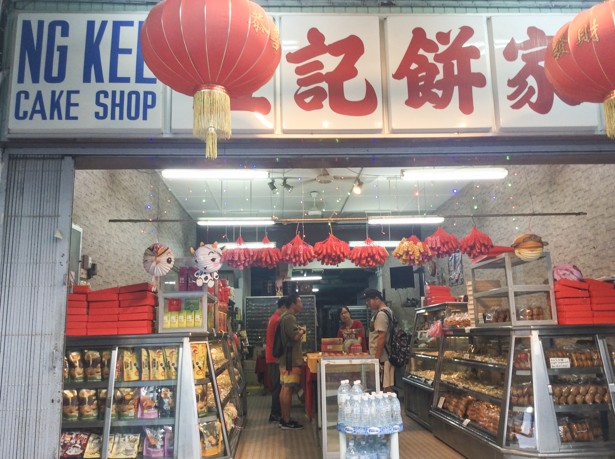
We then went for drinks in the beautifully remodelled Seven Terraces hotel, where the cocktails in the comfortable, elegant Baba Room cost more than any of our meals that day.
Stay tuned for part two of Susan’s culinary tour of Penang next Friday